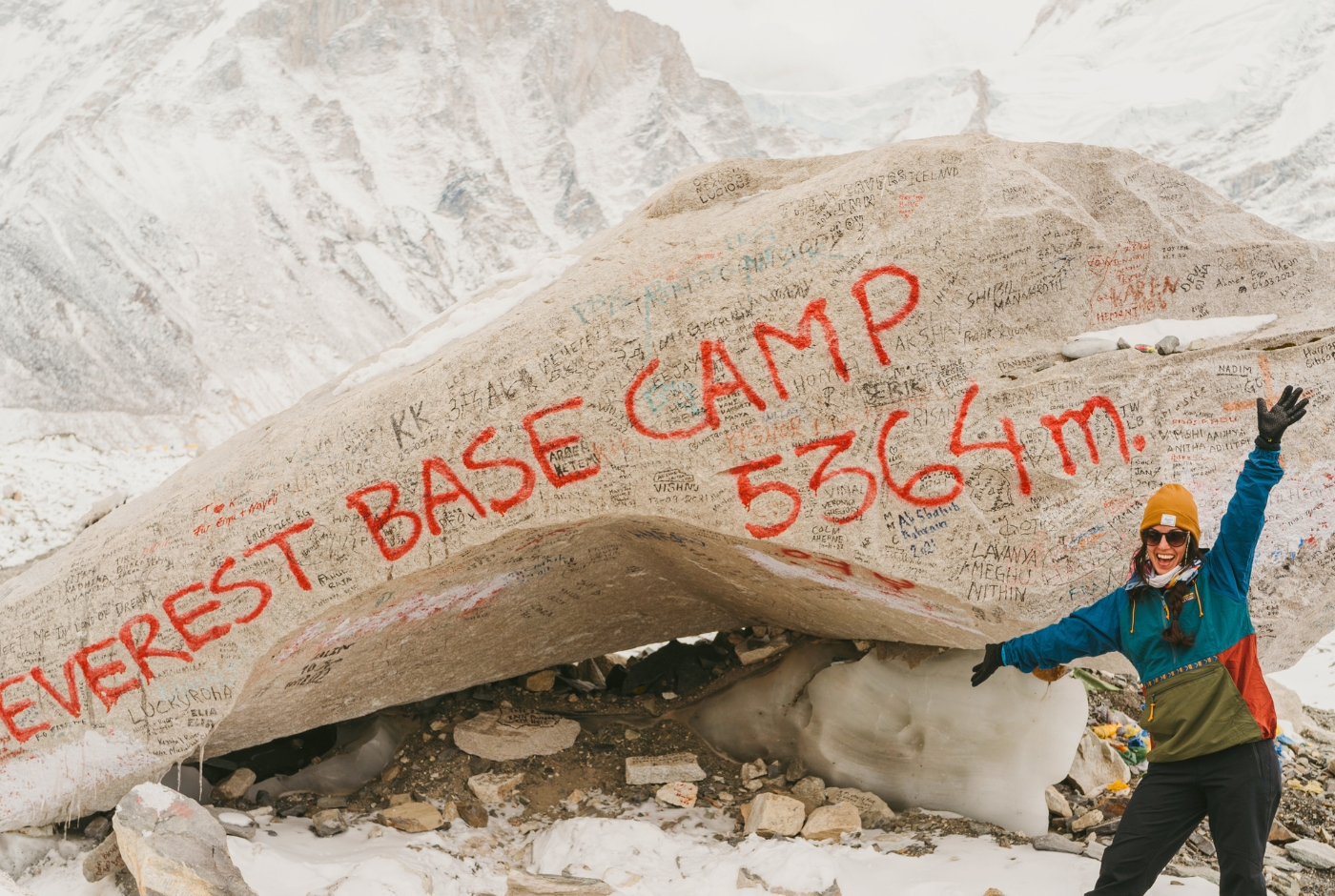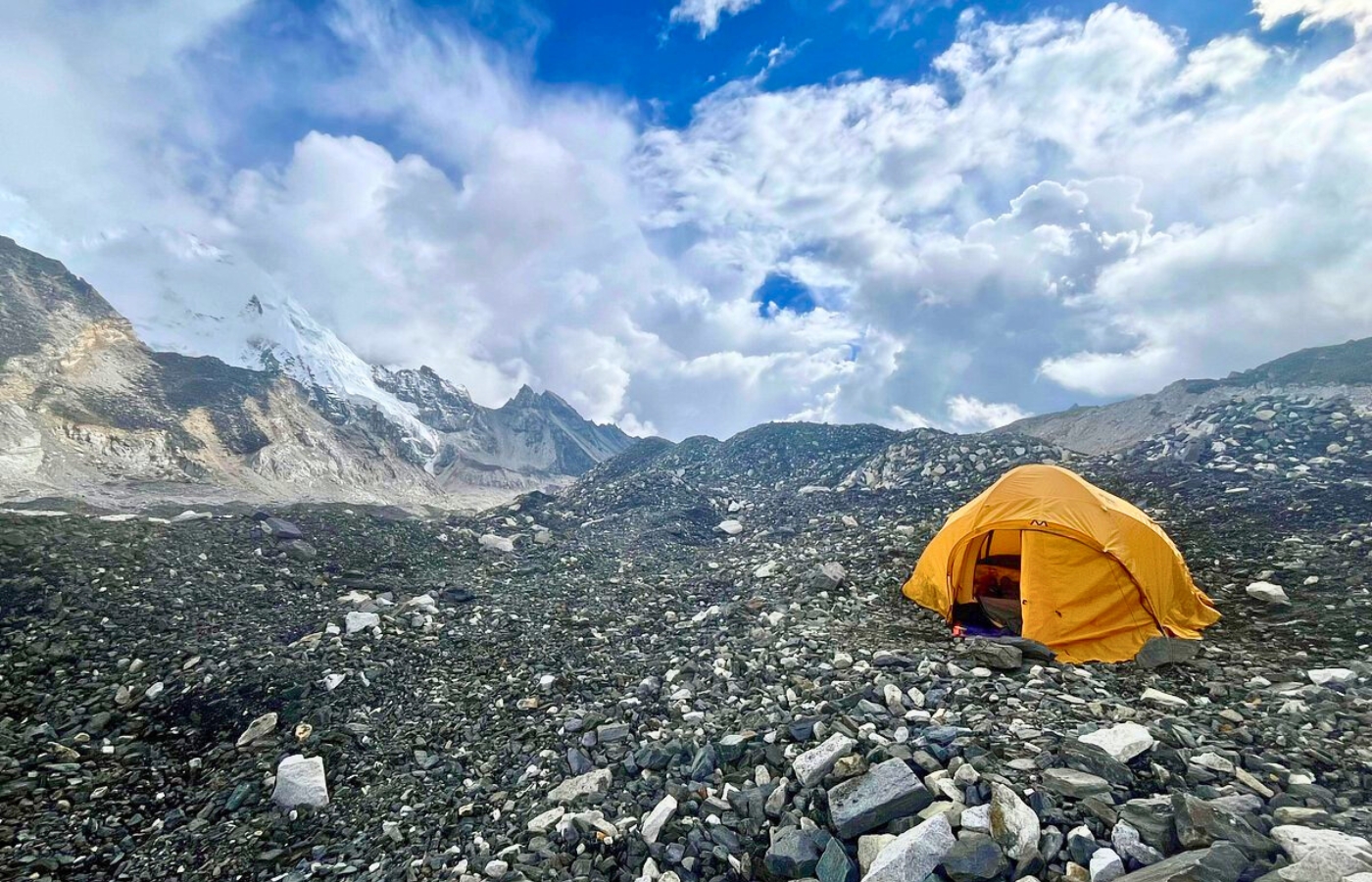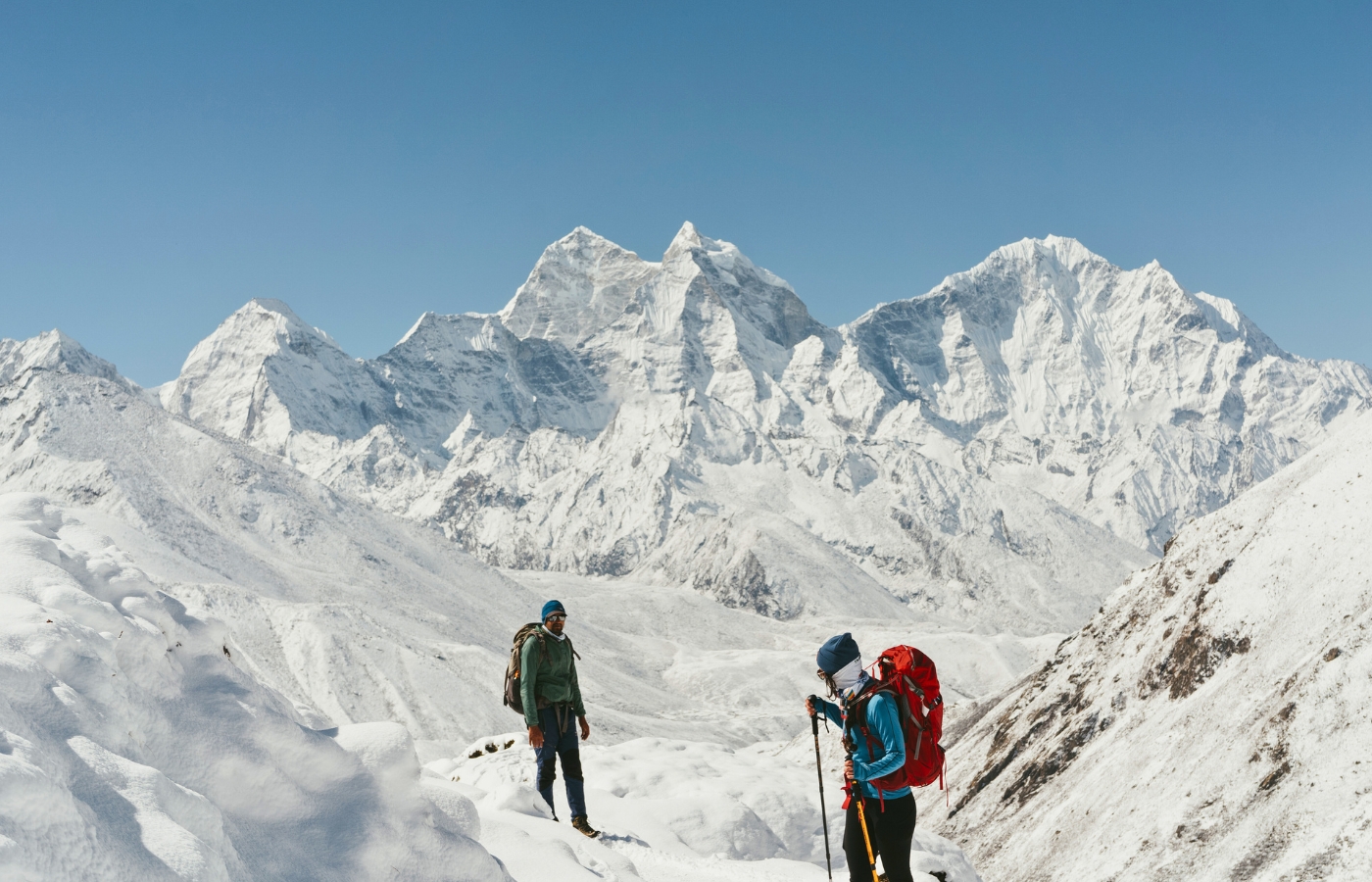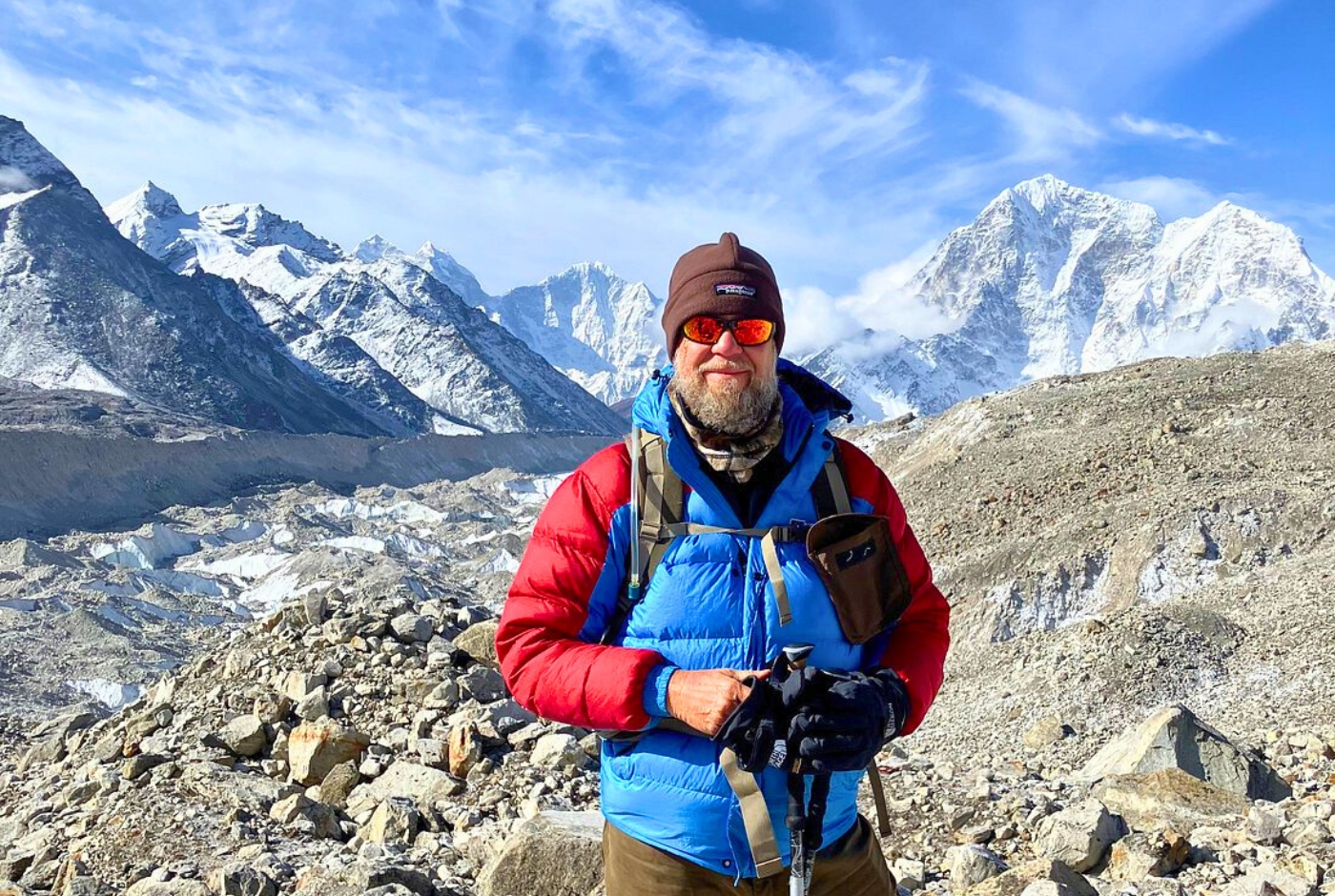How far have your adventures taken you from the familiar comforts of home? It's a compelling question, isn't it? Many believe that to truly embrace the fullness of life, one must venture beyond the horizon, to seek out the unknown and etch their own legends into the fabric of the world. To truly maximize your journey through life, travel is not just a leisure activity, but a vital pursuit. As you traverse new landscapes, remember the power of crafting momentous travel tales – stories you'll recount with pride to friends and family for years to come. Dare to reach those extraordinary places where footprints are scarce, where the air is thinner, and the views are infinitely more rewarding.
How High is the Mount Everest Base Camp? Exact Height of EBC from Sea Level
Everest Base Camp Height in meters - 5,364m above sea level
Everest Base Camp Elevation in ft - 17,598 feet
Everest Base Camp, often referred to as EBC or Mount Everest Base Camp, sits at an altitude of 5,364 meters (17,598 feet). Whether you're looking up Everest Base Camp height, elevation, or altitude, this is the official measurement on the Nepal side. It's a key milestone for trekkers and the starting point for climbers heading toward the summit.
Among such epic endeavors, the Everest Base Camp Trek stands out as a profoundly satisfying pilgrimage, a true once-in-a-lifetime achievement. Imagine leaving your mark, your own indelible footprint, at an astounding altitude of 5,364 meters (17,599 feet). Ascending beyond the five-thousand-meter threshold ushers you into a domain explored by a limited few. In this challenging terrain, the unique and hardy flora acts as a botanical confirmation of your arrival into the distinguished company of elite high-altitude explorers.
Learn more about the Everest Base Camp Trek in Detail. Check Permits to trek to EBC, maximum height reached during Mount Everest Trek, Accommodation, cost, and several other factors while trekking to Mount Everest Base Camp.
The sheer elevation of Everest Base Camp (EBC) at 5,364m is a core part of its allure, promising an exhilarating and transformative trip. This iconic trekking trail is undeniably one of the most challenging yet rewarding routes globally, drawing hundreds of intrepid seekers from every corner of the earth each year. The intriguing nooks, demanding corners, and significant altitude gain make it an irresistible magnet for those who thrive on extreme adventure.
MT Everest Base Camp Elevation?

While the path to EBC presents a formidable challenge, don't let that deter you. With dedicated preparation, proper training, and a solid understanding of acclimatization and the altitude gain involved, this scenic Himalayan trail can be conquered. Beyond the classic trek, for those seeking a different perspective or a less physically demanding option, exploring Everest Base Camp via a helicopter ride offers a breathtaking experience, whisking you to an even greater elevation of 5,545 meters (18,192 feet). However, a word of caution for any aspiring EBC visitor: underestimating the rigors of this high-altitude environment can lead to significant difficulties, so thorough preparedness is absolutely paramount to a safe and successful journey.
Everest Base Camp Elevation Guide: EBC Height
When you step out of your home with dreams of standing at the foot of the mighty Mount Everest, one question naturally arises: How high is Everest Base Camp? To answer this, we've prepared a comprehensive guide detailing the elevation of Everest Base Camp. Everest Base Camp (EBC) sits at an impressive altitude of 17,598 feet (5,364 meters) above sea level. That’s nearly 3.3 miles into the sky—higher than most peaks around the world. Nestled on the Khumbu Glacier, the EBC height is measured from sea level, not from the valley floor, which adds to its awe-inspiring elevation.
Everest Base Camp Altitude-> 5364m

To put it in perspective, the altitude of Everest Base Camp is roughly half the height of Mount Everest itself, which towers at 29,032 feet (8,848 meters). This means there's still over 11,000 feet of vertical rise between the base camp and the summit—a staggering difference that defines the epic scale of Himalayan trekking. Whether you're a trekker or a climber, the Everest elevation makes EBC a true test of endurance and adventure.
Everest Base Camp Elevation for Trekking Trail
When trekkers speak of reaching Everest Base Camp (EBC), they’re referring to the South Base Camp in Nepal, located at a striking 5,364 meters (17,598 feet) above sea level. This is the final stop for most trekkers on the classic EBC trekking trail and serves as the staging point for climbers aiming for the summit.
South Base Camp Mount Everest Elevation in Feet: 17,598 feet

To clarify, there are two Everest Base Camps—the South Base Camp in Nepal and the North Base Camp in Tibet. The altitude of the Tibetan EBC is 5,150 meters (16,900 feet), slightly lower than Nepal’s. However, this article focuses solely on the altitude of Everest Base Camp in Nepal, the one accessed by the world-renowned trekking route through the Khumbu region. Compared to the summit’s massive 8,848 meters (29,032 feet), the EBC height still offers a thrilling taste of high-altitude adventure.
Everest Base Camp Trek Elevation Profile - 2025
Everest Base Camp (EBC) itself is magnificently situated at the profound altitude of 5,364 meters (17,598 feet) above sea level. This is the globally recognized official altitude, essential for navigation and truly grasping the immense scale of this Himalayan sanctuary. When you stand at Everest Base Camp, you are literally over 5.3 kilometers above the sea, surrounded by a breathtaking panorama of the world's highest peaks, including the colossal Mount Everest.
A clear and thorough understanding of the daily elevation changes is absolutely vital for any trekker aspiring to reach Everest Base Camp. This knowledge underpins effective planning, particularly for the crucial acclimatization needed to adapt to the thinning air and increasing altitude. Below, you'll find a common day-by-day altitude breakdown for the Everest Base Camp trek, reflecting a typical itinerary for 2025. This schedule is carefully designed to balance gradual ascent with necessary rest and adaptation periods, maximizing your chances of a safe and successful journey.
| Day | Route | Start Elevation | Max Elevation | End Elevation | Elevation Gain |
| 1 | Kathmandu (1,400m) → Fly to Lukla → Trek to Phakding | 1,400m | 2,860m | 2,610m | +1,210m / -250m |
| 2 | Phakding → Namche Bazaar | 2,610m | 3,440m | 3,440m | +830m |
| 3 | Acclimatization: Hike to Everest View Hotel | 3,440m | 3,880m | 3,440m | +440m / -440m |
| 4 | Namche Bazaar → Tengboche | 3,440m | 3,860m | 3,860m | +420m |
| 5 | Tengboche → Dingboche | 3,860m | 4,410m | 4,410m | +550m |
| 6 | Acclimatization: Hike to Nangkartshang Peak | 4,410m | 5,083m | 4,410m | +673m / -673m |
| 7 | Dingboche → Lobuche | 4,410m | 4,910m | 4,910m | +500m |
| 8 | Lobuche → Gorak Shep → Everest Base Camp → Gorak Shep | 4,910m | 5,364m | 5,164m | +454m / -200m |
| 9 | Gorak Shep → Kala Patthar → Pheriche | 5,164m | 5,545m | 4,210m | +381m / -1,335m |
| 10 | Pheriche → Namche Bazaar | 4,210m | 3,440m | 3,440m | -770m |
| 11 | Namche Bazaar → Lukla | 3,440m | 2,860m | 2,860m | -580m |
| 12 | Fly back to Kathmandu | 2,860m | 1,400m | 1,400m | -1,460m |
The Kala Patthar Ascent: Maximizing Everest Altitude & View
For the vast majority of trekkers heading to Everest Base Camp in 2025, the journey doesn't culminate solely at EBC. An indispensable highlight, woven into nearly every EBC trek itinerary, is the ascent of Kala Patthar. While it's a challenging climb, often undertaken in the crisp early morning air, its inclusion is paramount for one specific, highly coveted reason: Kala Patthar offers arguably the most iconic and unobstructed panoramic view of Mount Everest's majestic summit – a view famously not visible from Everest Base Camp itself.
It's crucial for trekkers to understand the significance of Kala Patthar (which translates to 'black rock') in terms of altitude. Standing at a formidable 5,644 meters (18,519 feet) above sea level, Kala Patthar actually surpasses the elevation of Everest Base Camp.
Is Height of Everest Base Camp the maximum height of the EBC Trek?

This means that by including Kala Patthar in your itinerary – which is highly recommended for the unparalleled Everest vistas – your maximum altitude achieved on the trek increases. Consequently, your total net altitude gain from the typical starting point of Lukla (2,860m / 9,383 ft) to the summit of Kala Patthar becomes a significant 2,784 meters (9,136 feet). Summitting Kala Patthar, therefore, represents the true apex of your high-altitude exposure and achievement on the Everest Base Camp trek.
Why You Must Be Vigilant About the EBC Height: Understanding the Risks
The Everest Base Camp Trek is undeniably a dream adventure for many, gracing countless travel bucket lists. While summiting Mount Everest (8848.86 m) remains an ultimate aspiration for a select few, visiting the foothills of the world's tallest peak via the EBC trek offers a more accessible, yet still incredibly rewarding, experience. In fact, it's one of Nepal's most sought-after and popular holiday activities.
However, the allure of this incredible journey comes with a critical caveat: you must be extremely careful and well-informed about the Everest Base Camp Trek height. The primary reason for this caution lies in the significant risk of altitude sickness.
Base Camp Elevation Mount Everest

Thinner Air, Less Oxygen: As you ascend to higher elevations on the EBC trek, the atmospheric pressure decreases. This means the air becomes "thinner," containing a lower concentration of oxygen molecules with each breath.
Body's Response to Low Oxygen: Your body needs time to adapt to these reduced oxygen levels. If you ascend too quickly or without proper acclimatization, you can develop symptoms of altitude sickness.
Common Symptoms of Altitude Sickness: Initial signs often include headache, nausea, dizziness, fatigue, and loss of appetite. These are signals from your body that it's struggling with the altitude.
Risk of Serious Complications: If these early symptoms are ignored and you continue to ascend, altitude sickness can progress to more severe and potentially life-threatening conditions.
These include:
- High Altitude Pulmonary Edema (HAPE): Fluid accumulation in the lungs, causing extreme breathlessness, coughing, and difficulty breathing even at rest.
- High Altitude Cerebral Edema (HACE): Swelling of the brain, leading to confusion, ataxia (loss of coordination), severe headache, and potentially coma.
- Difficulty in Breathing: Beyond specific altitude sickness syndromes, the simple physiological reality is that the higher you go, the less oxygen is available, which can inherently make breathing more strenuous, especially during exertion.
In essence, the increasing altitude directly correlates with decreasing oxygen levels, which is the fundamental trigger for altitude-related problems. Therefore, understanding the Everest Base Camp Trek height, respecting the ascent profile, and prioritizing acclimatization are not just recommendations—they are crucial for your safety and the overall success of your trek.
Symptoms and Prevention of Altitude Sickness in EBC Trek
As physical and mental fitness heavily impacts your trek, appropriate training for Everest Base Camp is a must, and so is the understanding of altitude sickness in the Himalayas. EBC trek is one of the most extreme treks in Nepal, and failing to follow the precautions could impact you tremendously. As daunting as it may seem, proper training will prepare you well for the trek.
Altitude sickness is a common occurrence among EBC trekkers. When you rapidly ascend to a higher elevation, it becomes difficult for your body to adapt to the reduced air pressure and oxygen level. Such changes in atmospheric conditions can expose you to altitude sickness, followed by the symptoms such as nausea, vomiting, headache, dizziness, fatigue, and loss of appetite.
Mount Everest Base Camp Height

However, adopting some preventive measures can lower the risk of altitude illness. On that note, you should drink at least 3 to 4 liters of water on a daily basis throughout the trek. Likewise, you should avoid alcoholic drinks and smoking and carry preventive medicines. Most importantly, do not trek longer distances at once, and make sure to get sufficient rest.
Base Camp Height: What is the actual altitude of Everest Base Camp?
Mount Everest, straddling the border between Nepal and China, boasts two primary base camps, each serving as a gateway for climbers and trekkers approaching from different sides of the mountain.
South Base Camp Height (Nepal):
Situated at an altitude of 5,364 meters (17,598 feet) above sea level, the South Base Camp is located in Nepal's Khumbu region. This camp is accessible only by trekking or helicopter, with the journey typically commencing from Lukla, a mountain town at 2,860 meters (9,383 feet). The trek to the South Base Camp is renowned for its challenging terrain and breathtaking Himalayan vistas, making it a coveted adventure for many.
Nepal Everest Base Camp Height

North Base Camp Elevation (Tibet):
On the Tibetan side, the North Base Camp sits at a slightly lower elevation of 5,150 meters (16,900 feet). Unlike its southern counterpart, this camp is reachable by vehicle via a paved road branching from China National Highway 318, offering easier access for visitors
Significance of Everest Base Camp's Altitude
The altitude of Everest Base Camp represents far more than a simple numerical figure; it is the defining factor that fundamentally shapes the entire experience, lending a unique quality to the journey and the inherent challenges faced by both trekkers and mountaineers. Standing at approximately 5,364 meters (17,598 feet) above sea level, EBC's height is profoundly significant for several reasons:
The Gateway to the Summit: For mountaineers aiming to conquer Mount Everest, EBC is far more than just a scenic viewpoint. It serves as the critical launching pad, the very forerunner to the formidable and awe-inspiring Everest summit itself. It marks the beginning of the most perilous and demanding phase of their climb.
Crucial Acclimatization and Preparation Hub: The extreme altitude of EBC makes it an essential acclimatization zone. Climbers spend considerable time here, allowing their bodies to gradually adjust to the thin air and significantly reduced oxygen levels. It's a place for final preparations, equipment checks, and strategizing for the incredibly challenging conditions that lie ahead on the upper slopes of Everest. The unforgiving weather at this elevation is a constant reminder of what's to come.
A Crucible for Teamwork and Connection: The shared hardship and intense environment of EBC forge powerful bonds. It's a bustling international meeting point where climbers and their support teams build crucial relationships. This camaraderie and mutual support are critically important for the demanding and dangerous ascent that follows.
A Destination of Global Allure: While EBC is undeniably the operational heart for Everest expeditions, its significance extends far beyond the climbing community. It has become a place of immense aspiration for people from all walks of life around the globe. For trekkers, reaching EBC represents a monumental personal achievement, a chance to stand in the shadow of the world's highest peak. The availability of options like the Everest Base Camp helicopter trek further broadens its accessibility, allowing a wider range of individuals to witness this extraordinary environment, even if not undertaking the full trek or a summit attempt.
Everest Camp 4: Mount Everest Camp 4 Elevation
"Camp 4" on Mount Everest is the final high camp before the summit push and is often referred to as the "death zone" because it's at an altitude where the air pressure and oxygen levels are extremely low, making it difficult to sustain life for extended periods. Camp 4 is situated at a very high altitude, around 26,000 feet, where the air pressure is significantly lower than at sea level. The altitude at Camp 4 is so high that it is referred to as the "death zone," as the air pressure and oxygen levels are too low to sustain human life for extended periods.
Concluding Thoughts of EBC Height
While the path to EBC presents a formidable challenge, don't let that deter you. With dedicated preparation, proper training, and a solid understanding of acclimatization and the altitude gain involved, this scenic Himalayan trail can be conquered. Beyond the classic trek, for those seeking a different perspective or a less physically demanding option, exploring Everest Base Camp via a helicopter ride offers a breathtaking experience, whisking you to an even greater elevation of 5,545 meters (18,192 feet). However, a word of caution for any aspiring EBC visitor: underestimating the rigors of this high-altitude environment can lead to significant difficulties, so thorough preparedness is absolutely paramount to a safe and successful journey.
At Nepal Hiking Team, we've guided countless trekkers through the Khumbu region, helping them realize their Everest aspirations. Whether you're drawn to the traditional trekking route or considering the aerial perspective of a helicopter tour, we're here to support your journey every step of the way.



Post a Comment